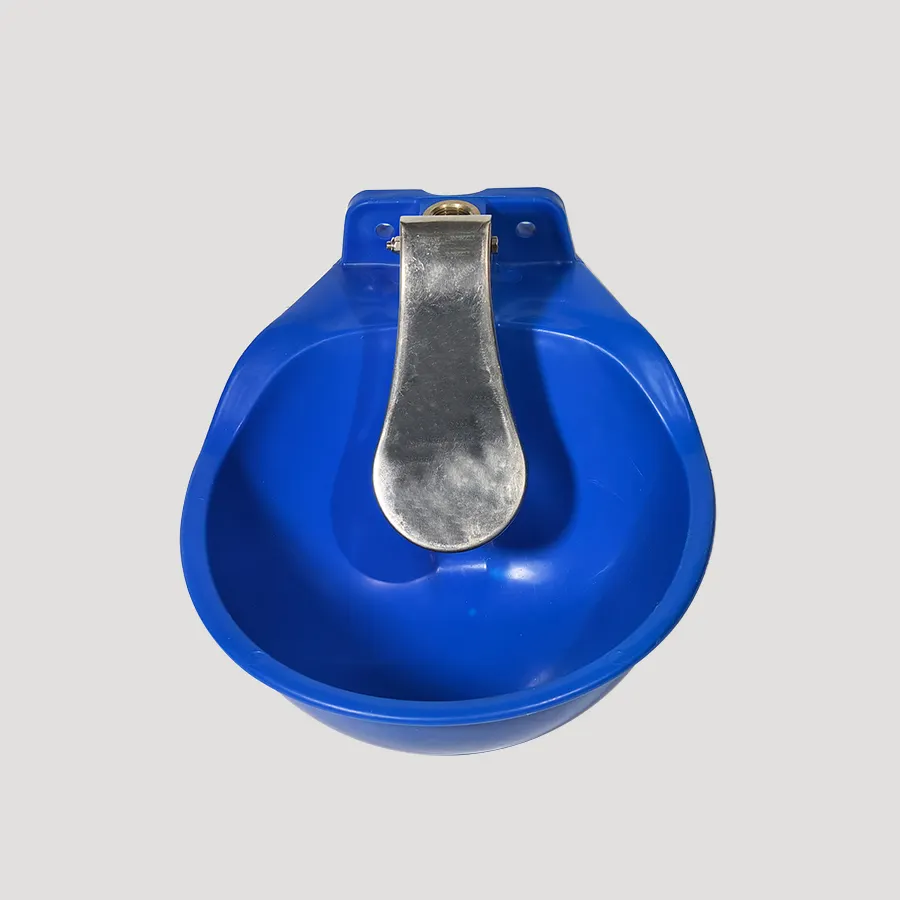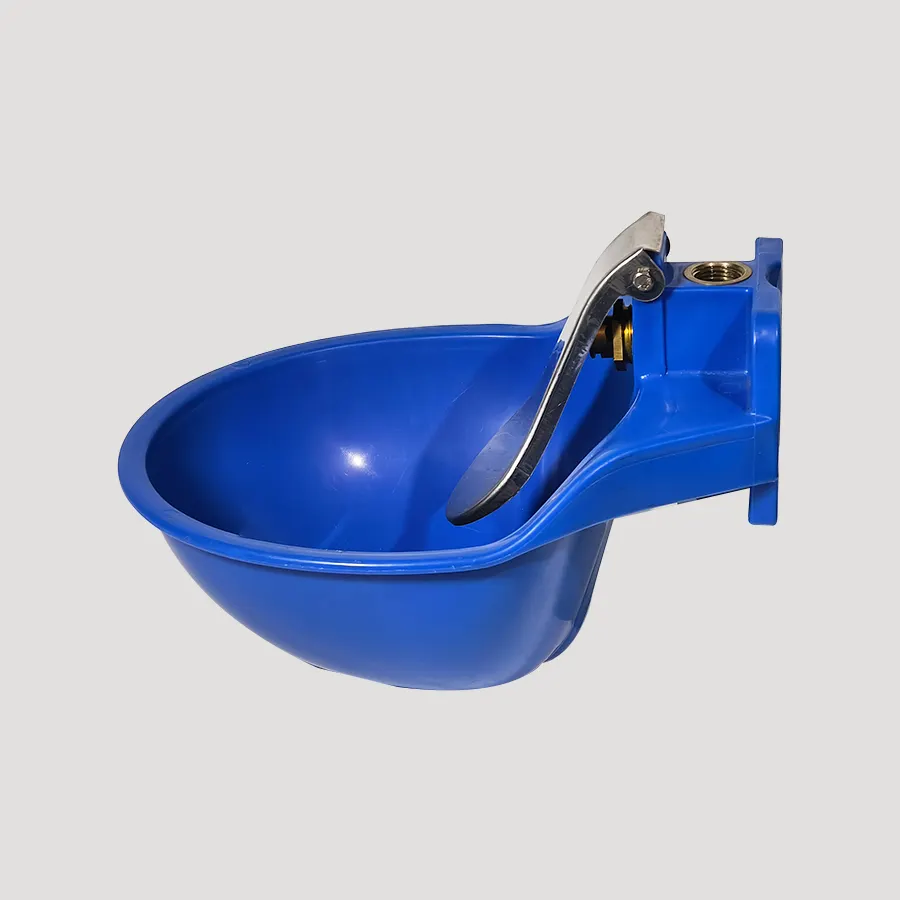Efficiency in Modern Livestock Operations
In modern livestock management, automation plays a vital role in saving time, reducing labor, and ensuring consistent animal care. Among the many tools designed to optimize operations, automatic animal drinking bowls stand out for their practical utility and long-term benefits. From enhancing hydration efficiency to reducing manual workload, these tools are becoming standard in both small farms and large-scale agricultural enterprises. Understanding how animal drinking bowls contribute to labor savings can help farm managers and animal caregivers make smarter infrastructure decisions.
The Design Principles Behind Automatic Drinking Systems
Water delivery automation
Automatic animal drinking bowls are designed to ensure a constant and clean water supply to livestock without requiring frequent human intervention. The mechanisms often rely on float valves, pressure systems, or electronic sensors to refill water as needed. This automation eliminates the need to manually check and refill bowls multiple times a day, saving significant labor over time. The self-regulating aspect ensures that animals always have access to water, which contributes to better health outcomes.
Durability and ease of cleaning
Animal drinking bowls are built with materials that resist corrosion, impact, and wear. High-quality stainless steel or heavy-duty plastic is often used to handle tough farm conditions. Their design minimizes areas where debris or algae can accumulate, making them easier to clean and maintain. This directly reduces the time spent on sanitation tasks while ensuring hygienic drinking conditions for the animals. By requiring less frequent cleaning and repairs, animal drinking bowls reduce the overall maintenance burden.
Impact on Daily Farm Operations
Reduced manual refilling routines
Before the widespread use of automatic systems, livestock handlers had to manually transport and refill water containers for different enclosures, paddocks, or pens. This task is labor-intensive, especially on larger farms with hundreds of animals. With automatic animal drinking bowls, this repetitive task is virtually eliminated, freeing up hours of labor daily for more strategic or value-added tasks such as health monitoring or feed management.
Improved consistency and animal health
Consistency is key in animal care, and automatic systems provide that by ensuring water is available at all times. Animals tend to drink more when water is easily accessible, which promotes better digestion, metabolic health, and milk production in dairy animals. Healthier animals require fewer veterinary interventions, which indirectly reduces the time and effort spent managing illnesses and complications.

Adaptability Across Species and Farm Types
Versatility in animal housing systems
Animal drinking bowls are not one-size-fits-all—they are adapted for various species including cattle, sheep, goats, horses, pigs, and even poultry. Each type of animal has specific drinking behaviors and needs, which modern bowls are engineered to accommodate. Whether it’s frost-resistant features for cold climates or non-spill designs for young animals, these systems can be customized to the environment and livestock type.
Compatibility with barn and pasture setups
Automatic animal drinking bowls can be installed in a variety of settings, from indoor barns and stalls to outdoor pastures and paddocks. Their installation options include wall mounting, ground fixation, and rail attachment, making them suitable for both temporary and permanent infrastructure. Their flexibility makes them a valuable asset for farms undergoing expansion or diversification.
Long-Term Labor and Cost Efficiency
Decreased dependency on manual labor
As farms face increasing challenges in hiring and retaining skilled labor, automation becomes more than just a convenience—it becomes a necessity. Animal drinking bowls help alleviate this challenge by reducing one of the most basic but time-consuming farm duties. This allows fewer workers to manage larger numbers of animals effectively, which becomes especially important during labor shortages or peak seasons.
Lower maintenance and operating costs
Although the initial cost of installing animal drinking bowls may be higher than traditional buckets or troughs, the long-term savings are substantial. These systems are designed for durability and efficiency, which lowers the frequency of repairs and replacements. They also minimize water waste, translating into lower utility costs. When evaluating total cost of ownership, automatic systems typically pay for themselves within a short operational period.
Enhancing Animal Welfare Through Automation
Continuous access to clean water
Animals need fresh water throughout the day to stay healthy and perform optimally. Interruptions in water availability can cause stress, reduced feed intake, and lower productivity. Automatic animal drinking bowls ensure a constant supply of clean water, improving animal comfort and performance. This consistent availability reduces stress-related behaviors and promotes a more stable environment.
Hygienic standards and disease prevention
Manual watering systems are prone to contamination, especially when left unattended for long periods. Automatic systems help mitigate this risk through their closed-loop or self-regulating mechanisms. Many animal drinking bowls are also designed to prevent backflow and include anti-microbial surfaces or coatings. Cleaner water sources mean fewer instances of gastrointestinal or bacterial infections, reducing the need for medical intervention and the labor associated with treating sick animals.
Sustainable Water Management Practices
Controlled water consumption
Automatic animal drinking bowls often come with flow control features that ensure animals receive only as much water as they need. This precision reduces wastage, especially in large-scale operations where hundreds or thousands of liters of water are dispensed daily. Sustainable water use is not only environmentally responsible but also aligns with cost-saving goals.
Integration with smart farming technology
Some animal drinking bowls are now equipped with sensors that track consumption levels, detect leaks, and monitor animal behavior. These data points can be integrated with farm management systems to provide valuable insights for decision-making. For example, a sudden drop in water intake might indicate illness in a specific animal. This smart integration streamlines labor by reducing guesswork and enabling proactive care.
Choosing the Right Automatic Drinking System
Key features to look for
When selecting animal drinking bowls, it’s important to consider features like valve reliability, material strength, flow rate adjustability, ease of cleaning, and temperature resistance. These features determine how effectively the system will serve the farm's specific needs and how much labor it will ultimately save. Choosing the right combination of features enhances operational efficiency.
Customization and support
Many manufacturers offer options for customizing animal drinking bowls to match the unique needs of a farm. These include different sizes, mounting methods, and additional features like heaters for winter use. After-sales support, including installation assistance and replacement parts, is also an important factor. Investing in a system from a reliable supplier ensures longevity and minimizes the need for constant maintenance.
FAQ
Are automatic animal drinking bowls suitable for all livestock?
Yes, most automatic animal drinking bowls are designed with specific species in mind and can be selected according to the needs of cattle, horses, sheep, goats, pigs, and other animals.
How do automatic drinking systems save on labor?
They eliminate the need for manual refilling, reduce cleaning frequency, and ensure consistent hydration, which frees up time for other essential tasks on the farm.
Do these systems require a lot of maintenance?
Generally, no. Most animal drinking bowls are built for durability and easy cleaning. Routine inspections and occasional part replacements are usually sufficient.
Can automatic animal drinking bowls be used in outdoor environments?
Yes, many models are weather-resistant and include features like frost protection, making them ideal for both indoor and outdoor use in various climates.
Table of Contents
- Efficiency in Modern Livestock Operations
- The Design Principles Behind Automatic Drinking Systems
- Impact on Daily Farm Operations
- Adaptability Across Species and Farm Types
- Long-Term Labor and Cost Efficiency
- Enhancing Animal Welfare Through Automation
- Sustainable Water Management Practices
- Choosing the Right Automatic Drinking System
- FAQ

